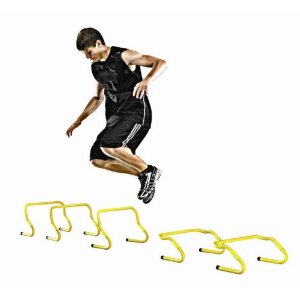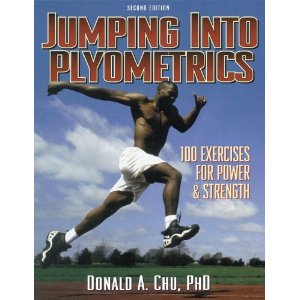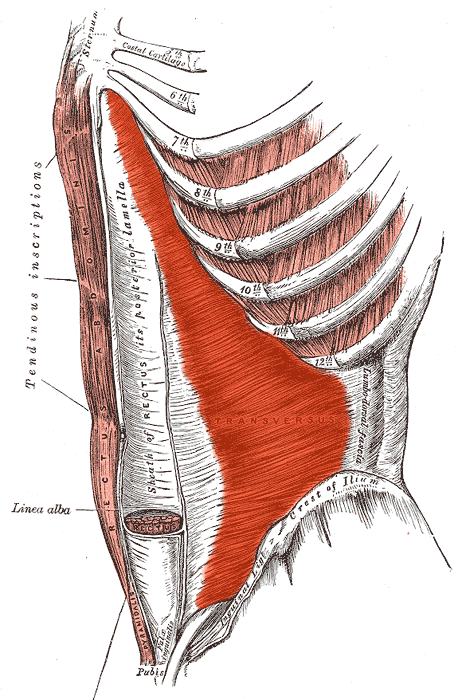 In my college fencing program, we used a lot of plyometric exercises in our pre-season workouts. Our fall semester workouts would follow a pattern of a good bit of aerobic and interval training for conditioning, with the plyometric exercises mixed in. (The calls by Coach Miller to head to the racquetball room were generally met with groans for what we knew was to come.)
In my college fencing program, we used a lot of plyometric exercises in our pre-season workouts. Our fall semester workouts would follow a pattern of a good bit of aerobic and interval training for conditioning, with the plyometric exercises mixed in. (The calls by Coach Miller to head to the racquetball room were generally met with groans for what we knew was to come.)
Those jumping drills were done to help our explosiveness and seemed to help with the muscle-specific endurance to be able to explode into a lunge at the end of the last DE of the last bout of the day. They are mentioned also in Lorenzo’s article about Weight Training for the Competitive Fencer.
Plyometrics (jumping exercises) are also extremely effective in increasing power and speed, but can also be quite dangerous and can aggravate any previously existing conditions (the most common being patellar tendinitis), so they should be done cautiously and under close supervision.
Lorenzo placed plyometrics into a mix of activities for increasing strength and fitness for the competitive fencer. It’s important to take a broad approach to this kind of training. Without a good, solid design a fitness and conditioning program can overload the athlete.
Recently, the American College of Sports Medicine released another position paper on plyometrics related to training programs for youth athletes. Here is that position paper:
Plyometric Training for Children and Adolescents
Children and adolescents need to participate regularly in physical activities that enhance and maintain cardiovascular and musculoskeletal health. While boys and girls have traditionally been encouraged to participate in aerobic training and strength building activities, a growing number of children and adolescents are experiencing the benefits of plyometric training. Plyometrics refer to exercises that link strength with speed of movement to produce power and were first known simply as “jump training.”
Previously thought of as a method of conditioning reserved for adult athletes, the American College of Sports Medicine (ACSM) contends that plyometric training is a safe, beneficial and fun activity for children and adolescents provided that the program is properly designed and supervised.
Plyometric training conditions the body through dynamic, resistance exercises. This type of training typically includes hops and jumps that exploit the muscles’ cycle of lengthening and shortening to increase muscle power. Plyometric exercises start with a rapid stretch of a muscle (eccentric phase) and are followed by a rapid shortening of the same muscle (concentric phase). With plyometric training, the nervous system is conditioned to react more quickly to the stretch-shortening cycle. This type of training enhances a child’s ability to increase speed of movement and improve power production. Regular participation in a plyometric training program may also help to strengthen bone and facilitate weight control. Further, plyometric training performed during the preseason may decrease the risk of sports-related injuries. This may be of particular benefit to young female athletes who appear to be at increased risk for knee injuries as compared to young male athletes.
There are thousands of plyometric exercises, ranging from low intensity double leg hops to high intensity drills such as depth jumps. Although the latter is typically associated with plyometric training for the mature athlete, common games and activities such as hopscotch, jumping rope and jumping jacks can also be characterized as plyometrics because every time the feet make contact with the ground the quadriceps are subjected to the stretch-shortening cycle. In fact, plyometrics are a natural part of most movements, as evidenced by the jumping, hopping and skipping seen on any school playground.

With qualified coaching and age-appropriate instruction, plyometric training can be a safe, effective and fun method of conditioning for children and teenagers. However, there is the potential for injury to occur if the intensity and volume of the training program exceeds the abilities of the participants. Children and adolescents should develop an adequate baseline of strength before participating in a plyometric training program, or they should simply begin plyometric training with lower intensity drills and gradually progress to higher intensity drills over time. Although additional clinical trials are needed to determine the most effective plyometric training program for children and adolescents, beginning with one to three sets of six to 10 repetitions on one upper body exercise (e.g., medicine ball chest pass with a one-kilogram ball) and one lower body exercise (e.g. double leg hop) twice per week on nonconsecutive days seems reasonable. If multiple sets are performed, participants must be provided with adequate rest and recovery between sets (e.g., two to four minutes) in order to replenish the energy necessary to perform the next series of repetitions with the same intensity.
Unlike traditional strength training exercises, plyometric exercises are performed quickly and explosively. Plyometric exercises may be introduced into the warm-up period or incorporated into group game activities. Depending upon individual needs and goals, the plyometric training program can progress to include multiple jumps, single leg hops and throws using lightweight medicine balls. Modifying the program over time will help to optimize gains and prevent overtraining.
ACSM CURRENT COMMENT
Children and adolescents should be provided with specific information on proper exercise technique, rate of progression and safe training procedures (e.g., warm-up and cool-down). Also, children and adolescents must wear supportive athletic footwear and plyometric exercises should be performed on surfaces with some resilience. Plyometrics are not intended to be a stand-alone exercise program and should be incorporated into a well-designed overall conditioning program that also includes strength, aerobic, flexibility, and agility training.
Plyometric training may not only make children and adolescents faster and more powerful; this type of training may offer observable health benefit to young populations. The contention that plyometrics are inappropriate for boys and girls is not consistent with the needs of children and teenagers or their physical abilities. Plyometric training is a safe, worthwhile and fun method of conditioning for children and adolescents if age-appropriate guidelines are followed, qualified instruction is available, and individual concerns are addressed.
Written for the American College of Sports Medicine by Avery D. Faigenbaum, Ed.D.and Donald A. Chu, Ph.D., PT, ATC




